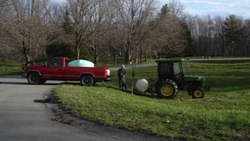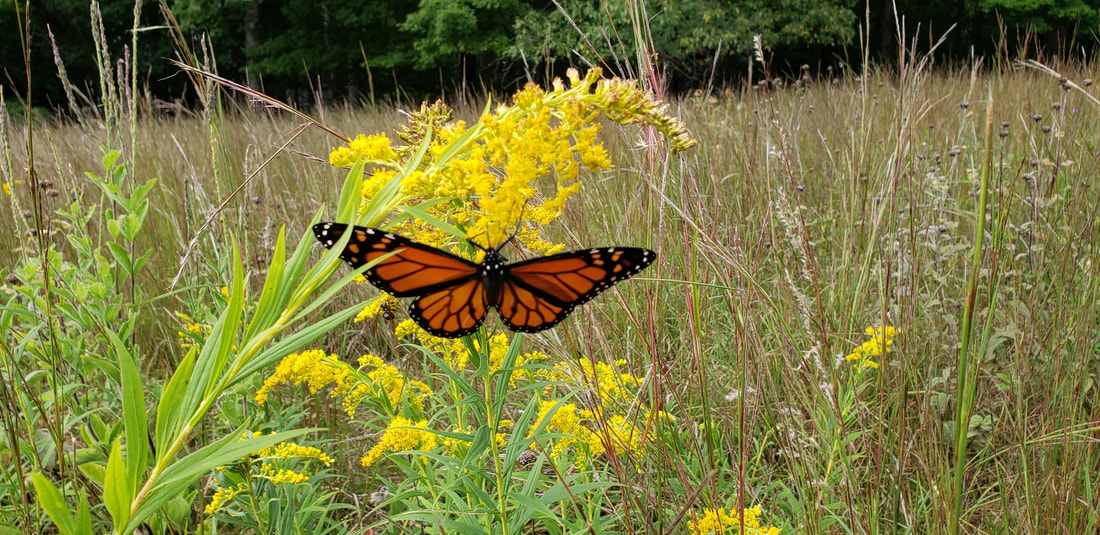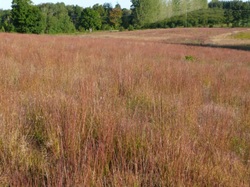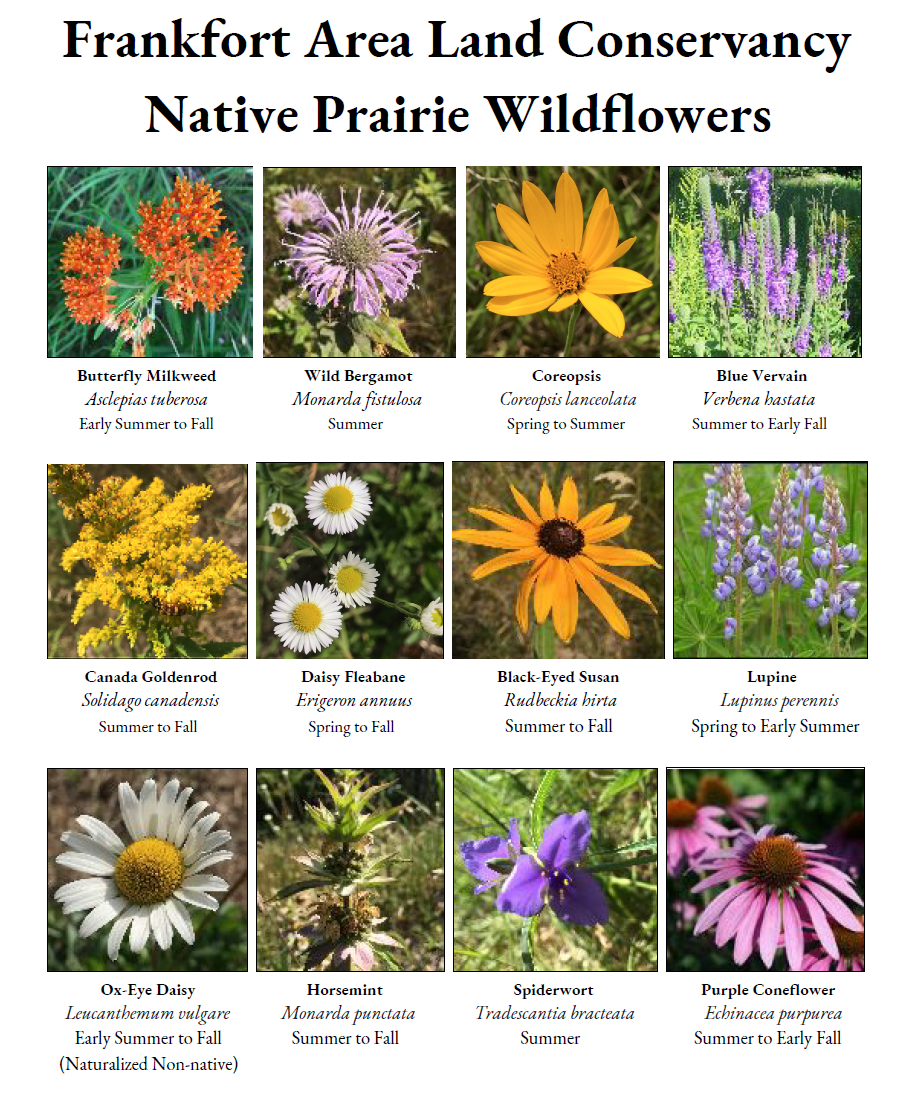Native Plants
Preservation of native plants involves both the reintroduction of pre-European grasses and plants, along with the protection of forest areas, and the eradication of invasive plant species that spread uncontrolled without action that keeps them in check.
If you have noticed that there are fewer wildflowers than a few years ago, it is primarily due to deer browse.
If you have noticed that there are fewer wildflowers than a few years ago, it is primarily due to deer browse.
Native Michigan Plants
Native Michigan plants are those plants that were here pre-European settlement (before 1880's). Native plants provide food and shelter for local and migratory birds, butterflies, beneficial insects, and other wildlife. They thrive in local soil types and weather conditions, preserve the natural diversity in the landscape, reduce the need for chemical fertilizers and pesticides, and reduce the need for irrigation. FALC recommends the following books if you are interested in reading more about native Michigan plants.
Bringing Nature Home - How Native Plants Sustain Wildlife in Our Gardens by Douglas W. Tallamy
Landscaping with Native Plants of Michigan by Lynn Steiner
Native Michigan plants are those plants that were here pre-European settlement (before 1880's). Native plants provide food and shelter for local and migratory birds, butterflies, beneficial insects, and other wildlife. They thrive in local soil types and weather conditions, preserve the natural diversity in the landscape, reduce the need for chemical fertilizers and pesticides, and reduce the need for irrigation. FALC recommends the following books if you are interested in reading more about native Michigan plants.
Bringing Nature Home - How Native Plants Sustain Wildlife in Our Gardens by Douglas W. Tallamy
Landscaping with Native Plants of Michigan by Lynn Steiner
Michigan Grasslands
Michigan had approximately 2 million acres of grassland prior to European settlement. Today, Michigan's grasslands are mainly influenced by agriculture. Today's grasslands are non-native, cool season grasses and legumes that are found in geographically different areas from those grasslands of the 1800s. As a result of changes over time, the largest decline in Michigan's bird community has been grassland birds. These birds are using an array of today's grasslands and are continuing to decline in part due to nest failure, especially in hayfields. Their food source, mainly insects, has been altered immensely by the change in grasslands and the introduction of insecticides in agricultural and residential areas.
The Frankfort Area Land Conservancy's developing grassland area will provide both nesting and stop-over habitat for many bird species using the north/south migration corridor along eastern Lake Michigan and Grand Traverse Bay.
Michigan had approximately 2 million acres of grassland prior to European settlement. Today, Michigan's grasslands are mainly influenced by agriculture. Today's grasslands are non-native, cool season grasses and legumes that are found in geographically different areas from those grasslands of the 1800s. As a result of changes over time, the largest decline in Michigan's bird community has been grassland birds. These birds are using an array of today's grasslands and are continuing to decline in part due to nest failure, especially in hayfields. Their food source, mainly insects, has been altered immensely by the change in grasslands and the introduction of insecticides in agricultural and residential areas.
The Frankfort Area Land Conservancy's developing grassland area will provide both nesting and stop-over habitat for many bird species using the north/south migration corridor along eastern Lake Michigan and Grand Traverse Bay.
Native Prairie Grass & Wildflower Planting Project

Click on picture to see more project pictures.
The Project
In 2011, the Frankfort Area Land Conservancy received a U.S. Fish and Wildlife Grant to provide support for initial installation and on-going maintenance of native prairie grass plantings. Over 100 private donors contributed to the prairie grass project. The Michigan Department of Natural Resources provided grass seed.
This area has been identified as an important bird area (IBA) by the Michigan Audubon Society and Saving he Birds Through Habitat due to its close proximity to the lakeshore and major flyways. You may have noticed the brown grass on the conservancy during the summer of 2011. This is exactly as anticipated. In year one, the meadows will look like a mass of dead grass as the root structure of the native grasses is developing and wildflowers will not appear until year four when all use of herbicide ceases. During the first year of planting, there will be limited access to trails and no access to the meadows. Over time, trail access will be restored and the grasses will begin to populate the meadows. In year four, they will achieve a height of almost three feet and thereafter, the wildflowers will be added.
The Frankfort Area Land Conservancy will be an exemplar of natural spaces; restored native grasses; enhanced songbird and beneficial insect populations—all for the enjoyment of our friends and neighbors and to the benefit of the community we live in.
In 2011, the Frankfort Area Land Conservancy received a U.S. Fish and Wildlife Grant to provide support for initial installation and on-going maintenance of native prairie grass plantings. Over 100 private donors contributed to the prairie grass project. The Michigan Department of Natural Resources provided grass seed.
This area has been identified as an important bird area (IBA) by the Michigan Audubon Society and Saving he Birds Through Habitat due to its close proximity to the lakeshore and major flyways. You may have noticed the brown grass on the conservancy during the summer of 2011. This is exactly as anticipated. In year one, the meadows will look like a mass of dead grass as the root structure of the native grasses is developing and wildflowers will not appear until year four when all use of herbicide ceases. During the first year of planting, there will be limited access to trails and no access to the meadows. Over time, trail access will be restored and the grasses will begin to populate the meadows. In year four, they will achieve a height of almost three feet and thereafter, the wildflowers will be added.
The Frankfort Area Land Conservancy will be an exemplar of natural spaces; restored native grasses; enhanced songbird and beneficial insect populations—all for the enjoyment of our friends and neighbors and to the benefit of the community we live in.


